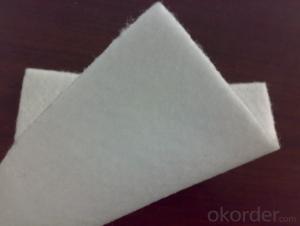Geotextile non-woven fabrics have been a revolution in the field of civil engineering and environmental projects. These adaptable materials are to improve the performance of various structures while providing a sustainable and economical solution. This article looks into the world of geotextile non-woven, fabrics, their uses, and what one stands to gain from them.
The Miracles of Geotextile Non-Woven Fabrics
Geotextile non-woven fabrics are synthetic materials produced using polymers such as polyester, polypropylene or polyethylene. They are not like woven materials that are made by arranging fibers in two directions only; instead they are formed by putting fibers randomly then bonding them together. This particular type of construction gives geotextiles unique strength and durability.
Application in Civil Engineering
Civil engineering projects heavily use geotextile non-woven types of fabrications. In road construction works these can be used for reinforcement in base layers so as to maintain stability and avoid cracking. Equally important is slope protection where they help to prevent soil erosion while maintaining slopes’ structural integrity.
Environmental Benefits
In addition to their structural applications, there are also many environmental benefits associated with such as that of the geotextile non- woven fabrics. Used in landscaping these products can curb weed growth which will subsequently reduce reliance on harmful chemicals. Furthermore, they can be used for water filtration, allowing water through but preventing soil particles from being carried away thereby avoiding sedimentation in water bodies.
Agriculture and Horticulture
In relation to agriculture, geotextile non-wovens play a role in improving soil structure and drainage system. Separators are among other applications where horticultural uses may include different layers for each plant type ensuring good growing conditions.
Personal Experience with Geotextile Non-Woven
I was lucky enough to work on one project that used geotextiles in order to stabilize slopes. It was unbelievable. The weather did not deter the fabric from becoming weak, and during the entire period of project implementation, the slope remained intact. This was a proof of how strong and dependable these geotextiles are.
The Manufacturing Process
Production processes for geotextile non-woven materials are very interesting. They entail several phases which include fiber extrusion, web formation, bonding and finishing. Each step in this process is carefully controlled so that the final product meets the highest standards of quality.
Durability and Longevity
Geotextile non-woven fabrics are highly durable as one of their most attractive features. They can tolerate different environmental factors as well as UV radiation and high temperature conditions among others. This makes them a perfect choice for long-term projects where they need to retain their functionality over time.
Cost-Effectiveness
In terms of cost efficiency, it is difficult to find better options than geotextile non-woven fabrics. They are relatively cheap to produce and install making them suitable for projects with limited budgets too. Additionally, their long life span means that initial capital outlay is recovered over years through reduced maintenance costs.
Challenges and Solutions
However, despite all these positive aspects, there are also some challenges associated with geotextile non-wovens such as getting damaged on installation if proper care is not taken during handling . But again there is a chance for reducing them by giving appropriate training with strict adherence to installation guidelines.
Geotextile Non-woven’s Future
People are increasingly becoming environmentally conscious, thus making the demand for green construction materials to go up. Geotextile non-wovens are set to play a significant role in bridging this gap. Further research will ensure that these fabrics find even more uses.
Conclusion
In conclusion, geotextile non-woven fabrics are indeed remarkable materials with several advantages across diverse sectors. Their resilience, dependability and eco-friendliness make them appropriate for many different applications. The potential of geotextile non-woven fabrics is huge given our continuous exploration and innovation efforts in this area. These things should be integrated into our lives so that we can have a better and stronger world using their powers towards sustainability.







